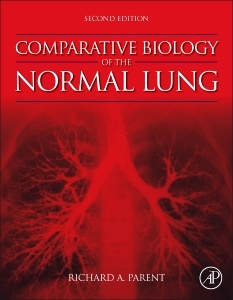Description
Comparative Biology of the Normal Lung (2nd Ed.)
Coordinator: Parent Richard A.
Language: English
Subjects for Comparative Biology of the Normal Lung:
834 p. · 21.4x27.6 cm · Hardback
Description
/li>Contents
/li>Readership
/li>Comment
/li>
Section I – Structural and Cellular Diversity of the Mammalian Respiratory System
Section II – Comparative Respiratory Physiology of the Normal Lung
Section III – Comparative Biochemistry of the Normal Lung
Section IV – Physical and Immunological Defenses of the Respiratory Tract
Toxicologists, Toxicologic Pathologists, Pulmonologists, Chest Physicians, Veterinary Medicine professionals and more.
- Edited and authored by experts in the field to provide an excellent and timely review of cross-species comparisons that will help you interpret and compare data from animal studies to human findings
- Incorporates lung anatomy and physiology, cell specific interactions and immunological responses to provide you with a single and unique multidisciplinary source on the comparative biology of the normal lung
- Includes new and expanded content on neonatal and aged lungs, developmental processes, cell signaling, antioxidants, airway cells, safety pharmacology and much more
- Section IV on Physical and Immunological Defenses has been significantly updated with 9 new chapters and an increased focus on the pulmonary immunological system
These books may interest you

Morphometry of the Human Lung 52.74 €



